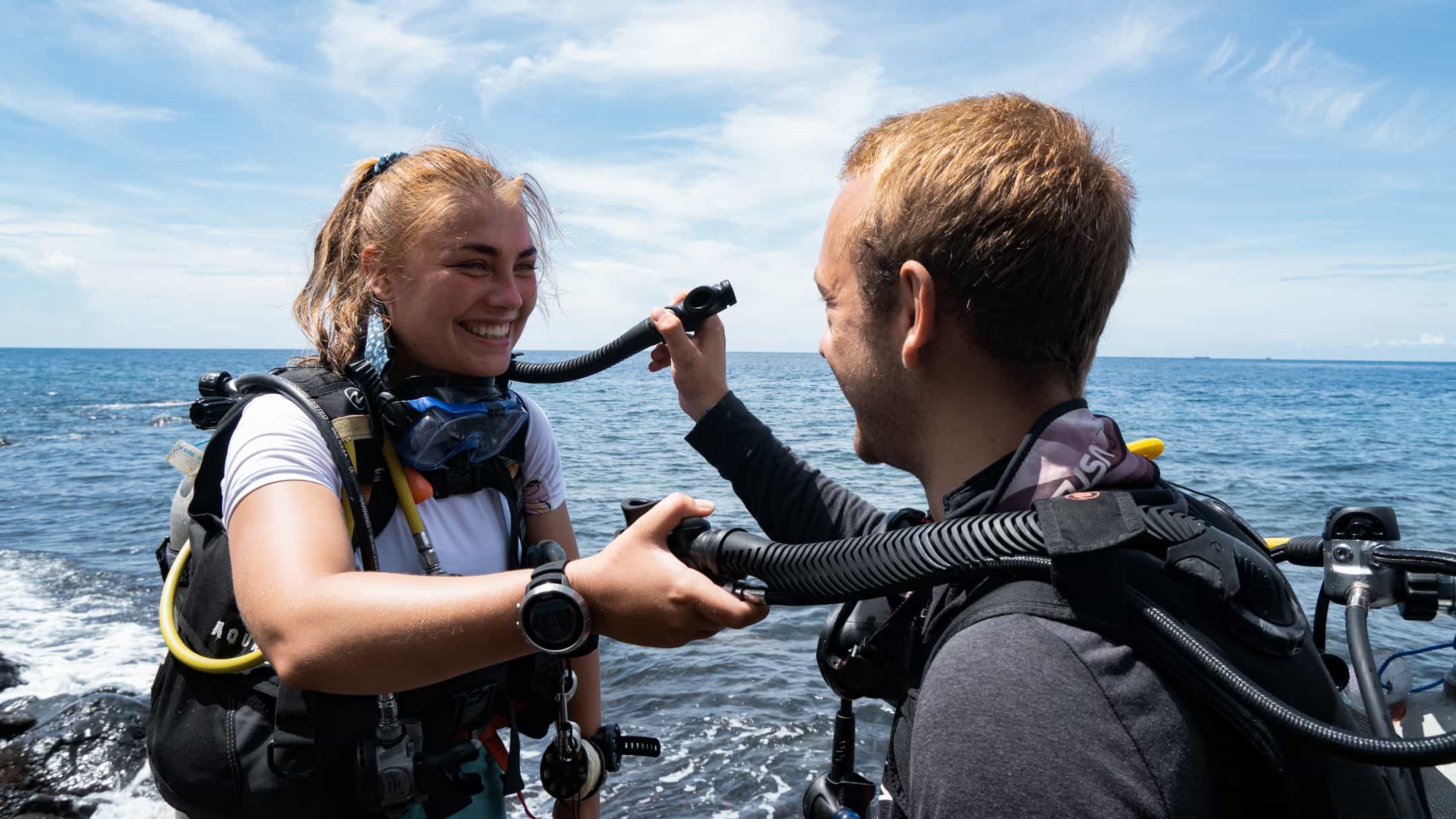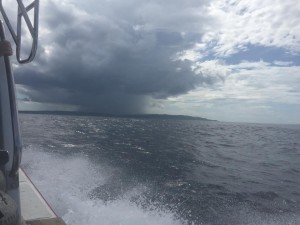Scuba Diving can be a very safe (and fun) sport. Following these 5 simple steps before you begin a dive will prevent a huge array of problems, save you time and prevent any pre-dive anxiety you may be experiencing. Once you have it practiced, this check shouldn’t take you longer than 2 minutes before you jump into the underwater world.
How do you remember the steps? Here are a couple of acronyms for you:
BWRAF – Bruce Willis Ruins All Films
BWRAF – Begin With Review And Friend
BWRAF – Burger With Relish And Fries
OR here in Bali we use: Breakfast With Rice And Fish
B – BCD
What do you check: Check to see that you can inflate and deflate your buddy’s BCD. You should check the low pressure inflator hose as well as the oral inflate. Make sure that you check all the dump valves and that you know where these are on your BCD and on your Buddy’s.
Possible problems/Solutions: Inflator hose not properly connected- connect inflator hose. Leak in BCD – replace BCD. Dump valve leaking so that BCD does not stay inflated – replace BCD – occasionally there can be dirt in the dump valve, causing it to leak – only remove and clean if you are very comfortable with your gear. Air not on – turn air on.
W – Weights
What do you check: Check to see that your buddy has a weight belt, where it is located and that it has a quick release system (this means that you can easily remove weights with one hand in an emergency). Right hand release is ideal if you have a weight belt, quick release pockets should easily click out. If you are diving with integrated weights, this is a good time to check that the pockets are properly clicked in place.
Possible problems/Solutions: Forgotten weight belt (there is nothing worse than getting into the water, only to discover you have forgotten your weight belt and now need to exit, remove your gear and start again. Don’t miss this vital step!). Weight belt trapped under equipment – in an emergency, you may need to drop your weights, you do not want the weight belt to be inaccessible.
What do you check: Check to see that all of your buddies releases (clips / straps) are all done up and secure. You might also check that none of his/her straps are twisted.
Possible Problems/Solutions: The releases that are commonly forgotten or not done correctly are the chest strap and the tank strap – it is very common to see someone battling to get their cylinder back into its tank band underwater, this is not a fun way to enjoy your dive. Make sure that the strap is tight and properly closed.
A – Air
What do you check: Check to see that your buddy’s air is switched on and that BOTH regulators are functioning. You do this by taking a couple of quick breathes from each regulator. A quick and easy way to check that the air is on is to look at the air gauge while you breathe – if the needle moves, the air is not completely open.
Possible Problems/Solutions: Air not completely open or not open at all.
What do you check: This is when you can give your buddy a once over. Check to see that they have mask, snorkel and fins ready. That all of their gauges are secured to their equipment and tucked away to reduce any impact on the environment.
Possible Problems/Solutions: Gauges not secured, forgotten equipment.
How about you? What is your favourite acronym for your pre dive safety check?





